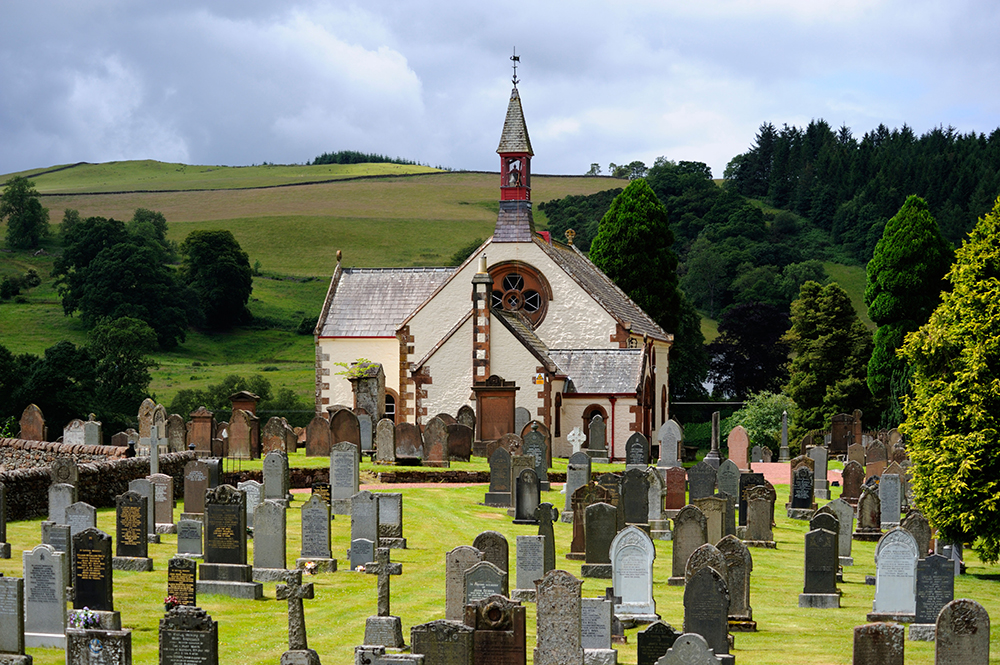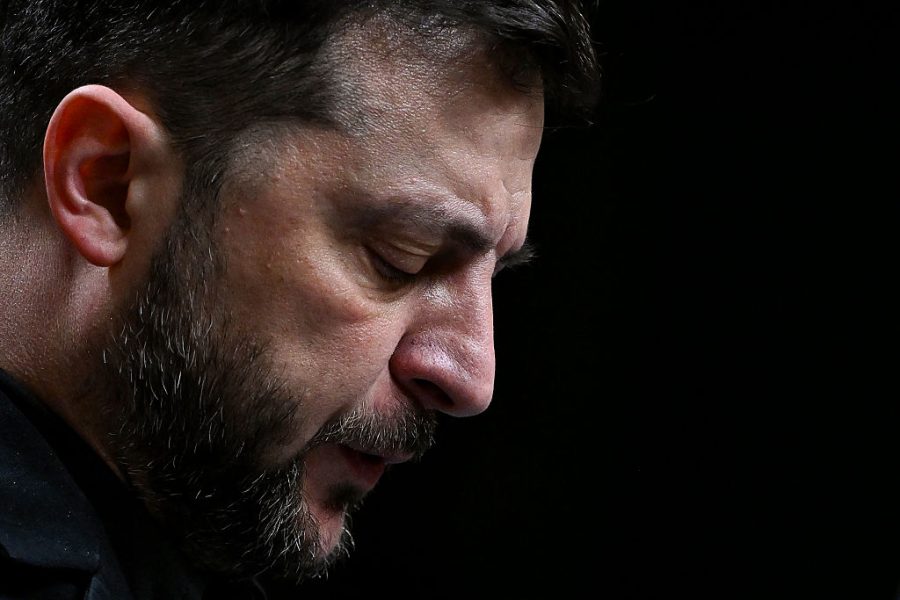‘We are not a heritage society,’ insisted the Rev David Cameron, Convener of the Assembly Trustees of the Church of Scotland. Speaking to the BBC in January, Mr Cameron claimed the Church has a ‘surplus of buildings and large property’, and that there is a need ‘to address our estate’.
A church or kirk is usually the most historically important building in any given town or village
In other words, the Church of Scotland is selling off its churches. Not just one or two here or there, but a lot, and for cut-price rates. Of course, the Church insists that the move is ‘painful but essential’, aping the language of a corporate multinational’s HR department. Yet the sheer scale and decisiveness of the move belie the patronising smiles of the Church hierarchy.
Anywhere between 20 and 30 per cent of parish churches – around 400 – are being put on the market. In deciding what to sell off, the Church has one eye on the bottom line. Since many of Scotland’s oldest and most beautiful churches require the highest maintenance costs, that puts them at risk.
Right now, in Aberdeen, just £390,000 could buy you St Mark’s, Alexander Marshall Mackenzie’s huge neoclassical church in the city centre. For a famously austere religious denomination, the church verges on camp: it has fine stained glass, an impressive organ, a large mezzanine, Corinthian pillars and a dome modelled on St Paul’s Cathedral.
If you’re in the market for something a little cosier, £110,000 gets you the 18th-century Kirkpatrick Juxta Parish Church. Beautifully set against the Lowther Hills, this little whitewashed brick church with Celtic cross windows currently serves the village of Beattock. But that’s about to change. Like most of the churches facing the chop, if bought, it will probably become just another home.
For the most part, news of a national sell-off has been met with a muted fatalism. Church of Scotland congregations, according to self-declared figures, are a shockingly low 60,000. It is true that other denominations are struggling too – in the 2022 census, Scotland was revealed as the UK’s first majority secular country, with 51 per cent declaring ‘no religion’ – but the dire figures have given the Church liberty to treat itself more like a business than the strong yet dormant heart of Scottish communities. In the advice given by the Church to local Presbyteries, churches are assessed on whether ‘each building remains relevant to a congregation’s missional role’. In other words, the abstract long-term demands of the ‘mission’ trump the real duties the Church has to the communities it serves.
What will happen to these churches? Some, it seems, will at least be saved from redevelopment. The Fife Historic Buildings Trust has drawn up a list of buildings that they hope to keep from private buyers.
But the list is small, and ambitions are limited to what’s realistic. Charities and trusts can do only so much. The Fife Historic Buildings Trust, for example, focuses its efforts on three churches – St Monans Auld Kirk, Culross Abbey and Burntisland Parish Church – in a county where more than 40 are facing the axe. If anything, the honourable efforts of the few draw attention away from the larger story. In most cases, communities don’t have the cash, time or organisation to save their kirk.
Has the Church of Scotland considered the broader ethics of its sell-off? A church or kirk is – after all – usually the most historically and aesthetically important building in any given town or village. That’s testament to the money, time, love and hope cumulatively apportioned to the building over centuries. It’s also indicative of the longstanding mutually reinforcing relationship that communities have had with the Church. What sort of judgment should be made of an organisation that so readily betrays it for short-term financial gain?
The churches most likely to be lost are often small kirks in small communities, whose means of resistance are slight. In north-east Fife, for instance, the churches in the small villages of Strathkinness, Dairsie and Kemback have been sold and all are being converted into housing for St Andrews commuters, who are forced out by a property market that’s increasingly dominated by student accommodation and Airbnbs for summer golfers. Selling these churches is just too convenient for all involved. Rather than serving these fragile communities, the Church has chosen to pack up, hiding behind the justification of what’s best for the ‘mission’.
You don’t need to be Edmund Burke to see that this is a tragedy – it’s obvious in the built environment of the very churches themselves. Recently sold graveyards contain not just the old headstones of the long-dead, but in many cases recently deceased family and loved ones. Converting the church into a house involves asking the awkward question of whether to live in among the graves. What sort of relationship will villagers have with the new owners’ back garden? Can you still visit the grave of your loved one?

In some places the Church’s retreat from its responsibilities has been close to total. Shetland, which was the first to lose its churches, is probably the worst affected. An act of crude rationalisation made what was 13 parishes into one and cut down the numbers of churches on the islands by two-thirds. Some of Scotland’s most beautiful and isolated religious buildings have been abandoned in the Church of Scotland’s relentless quest for function over beauty.
The Church managerial language of inevitability, profitability and sustainability well disguises the fact that there are alternatives. Just across the border, the Church of England, facing a similar problem, came to very different conclusions. Albeit with a lot of nudging from activists, the C of E is opting to mothball and rent out churches rather than sell them.
It raises the question: what’s killing the Church of Scotland – is it secularism or the Church itself?







Comments